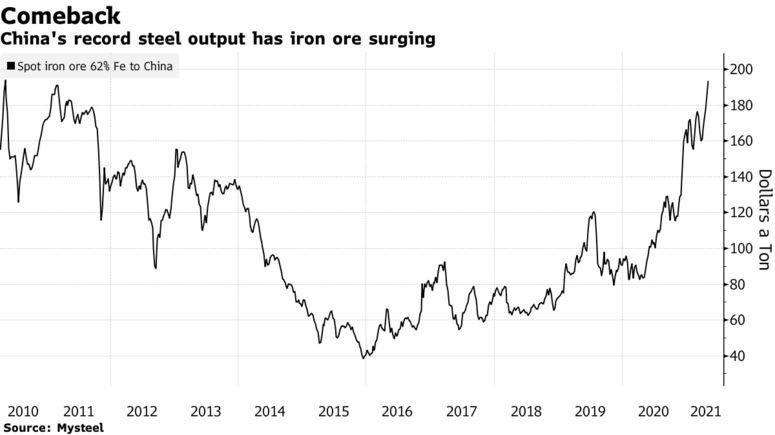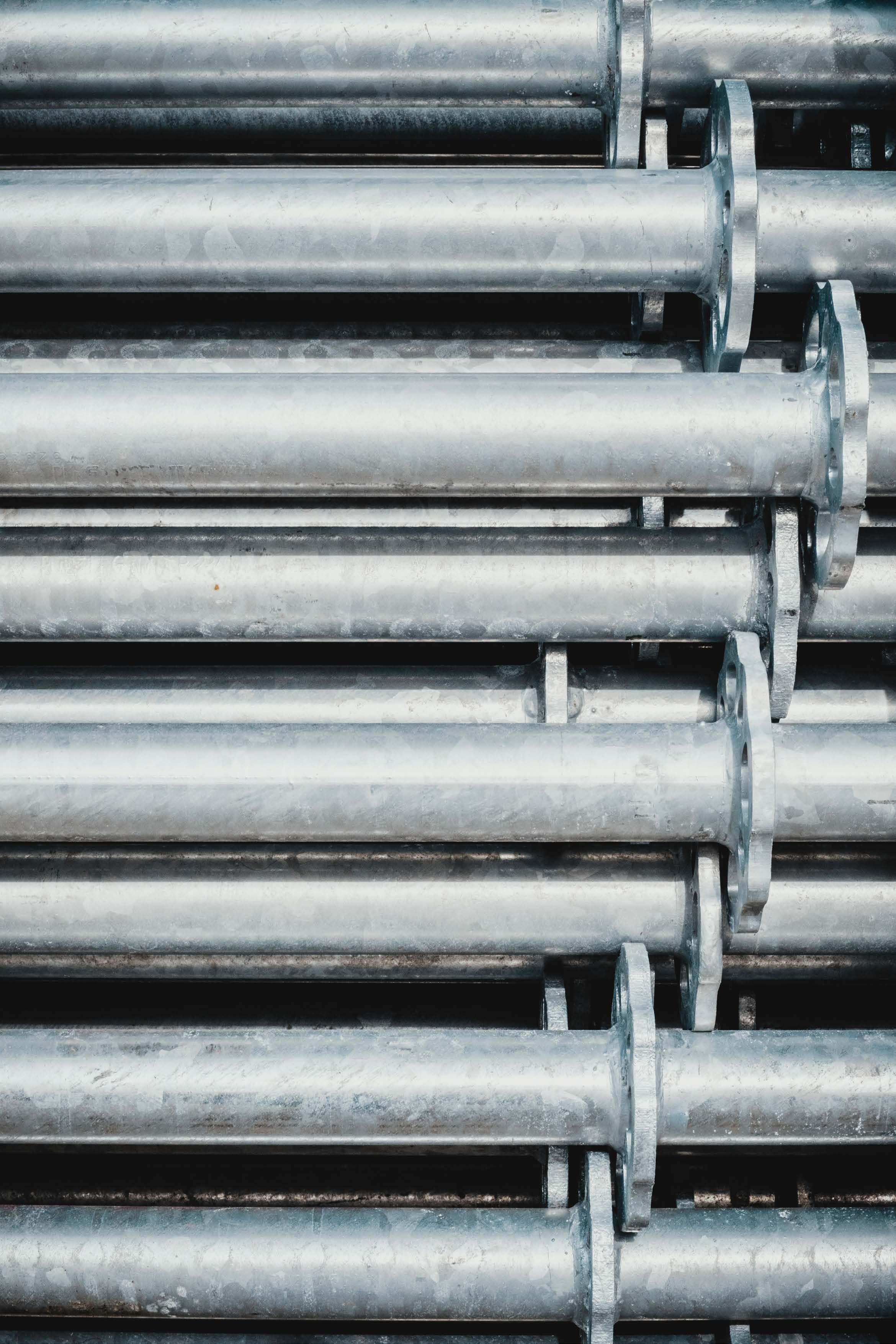
8 minute read
International Watch
SOUTH AFRICA
SOUTH AFRICA’S INDUSTRIAL POLICIES NEED TO BE REFINED IN ORDER TO TAKE ADVANTAGE OF GROWING GLOBAL STEEL PRICES
Advertisement
If South Africa is to take advantage of rising global steel prices, it will need to strategically refine and polish its industrial policies by bringing together all stakeholders, including the private sector, labor, and government, to increase internal demand, localize beneficiation, and establish value-added goods exports in order to serve as a value creator for the South African economy.
Steelmaking continues to be an important strategic industry for South Africa, accounting for 1.5 percent of GDP and 190,000 jobs.
The South African steel industry’s value chain multiplies the value of iron ore by four and is crucial to the country’s energy and water supply infrastructures, among other things.
The local steel industry, once a pillar of the local economy’s manufacturing, is in decline as costs rise, worldwide prices remain stable, and ambitious local infrastructure projects remain pipe dreams.
Since 1990, manufacturing’s actual value added as a percentage of gross domestic product (GDP) has been steadily declining at current prices. Since the global financial crisis in 2009, when the South African manufacturing industry’s contribution to GDP fell by 11% to R353 billion in constant 2010 prices, the South African steel sector has only recovered to 2008 levels by 2013, and has showed virtually no growth since then.
Manufacturing’s contribution to the South African GDP dropped by 44% from 24% in 1990 to 13% in 2018, clearly indicating the pace at which South Africa is moving down the deindustrialisation path.
Given its high fixed costs, the primary steel industry relies on economies of scale to realise sustainable margins. And in that context, one figure explains a great deal about the state of the industry globally: 928-million. That’s the number of tonnes of crude steel that China – undisputed global champion of scale – produced in 2018. The next largest national producer – India – produced one ninth of that amount. South Africa produced 6 million tonnes.
If there were sufficient global demand to sop up China’s colossal production, then its low prices could be met through tariffs and the exploitation of local competitive advantages. But the steel market has been overheated for years, resulting in product dumping and globally depressed prices.
This, then, is the global playing field. And locally, the home side is facing its own, crippling challenges.
Primary steel producers are facing prohibitive input costs, unreliable transport and energy infrastructure, and low domestic demand on top of cheap imports. The downstream sector faces its own set of hurdles, including an uneven tariff regime and ineffective border controls.
The World Steel Association conducted a study in 2017 to quantify the impact of the steel industry on the global economy. Although the multipliers may differ from country to country, a general trend can be concluded from these indicators.
South Africa is a small player in world steel, and needs to focus on its comparative advantages such as regional supply, niche quality products, and ready availability of input materials such as iron-ore. But those advantages are only brought to bear on something that would approximate a level playing field. And the playing field seems, at the moment, to be almost insurmountably vertiginous
The steel industry’s direct economic impact on the supply chain, as a result of the backward linkages into raw materials, equipment, energy and services, creates $2.5 of value-added activity in the downstream for each $1 of value added within the steel industry.
Every 1 000 t of steel produced locally adds R9.2million to GDP; provides three jobs directly and three indirectly; enables domestic procurement spend of R5.3 million, of which R0.5-million is spent with SMMEs; and gives rise to products that, in an ideal world, should be fuelling our industrialisation.
The answer to our challenges cannot, therefore, be the wholesale abandonment of an industry which has built up its steel-making expertise and infrastructure over a century, and has the skills, knowledge logistics networks and downstream businesses required for a viable and potentially thriving local steel sector.
South Africa is a small player in world steel, and needs to focus on its comparative advantages such as regional supply, niche quality products, and ready availability of input materials such as iron-ore. But those advantages are only brought to bear on something that would approximate a level playing field. And the playing field seems, at the moment, to be almost insurmountably vertiginous.
As an industry body we have put forward recommendations for incorporation into the Carbon and Stainless-Steel Value Chain Master Plan. These include, but are not limited to: intensifying the work of an inter-agency working group on illicit trade of steel products; deploying appropriate trade measures to level the playing field, especially for downstream products; applying carbon taxes on imported as well as domestically produced steel products; improving the short and long-term electricity pricing frameworks; improving logistics and transport infrastructure; and identifying and prioritising markets within Africa with high export potential, alongside other regional integration efforts.
If we were somehow to see consistent, reliable electricity, a coordinated approach to tariffs encompassing the downstream and upstream sectors, an improved transport infrastructure and the revitalisation of the construction industry, we might, finally, be in a position where we could begin to rebuild the industry, even in the face of cut-price imports. But if our current policy uncertainty continues, these markers of a healthy economy seem destined to remain pipe dreams.
As the steel sector falters it steadily loses its ability to regain its presence in local and international markets. Complicating the sector’s competitiveness is its dependence on the fortunes of manufacturing, mining and construction, all of which have been under pressure since the end of the commodity boom, and the sector’s inability to multiply productive linkages within the economy.
GLOBAL
GLOBAL ECONOMIC RECOVERY FUELING DEMAND FOR STEEL AND SPIKING PRICES
With global governments planning to splurge on infrastructure development as they map their post-pandemic path to growth this is resulting in steel prices spiking from Asia to North America, and iron ore’s marching higher, as bets on a global economic recovery fuel frenzied demand.
The world outside China is finally catching up with the Asian steel giant’s already strong markets as a global rebound drives a powerful wave of buying that can’t be matched by production. Sectors such manufacturing and construction are ramping up and governments have pledged to splurge on infrastructure as they map their post-pandemic path back to growth.
Mills’ order books are filling up as buyers look to lock in steel after a year of output curbs and idling of plants. On top of that, the biggest iron ore miners have been hampered by operational issues, tightening a market that hadn’t fully recovered from a supply shock more than two years ago.
Here’s four charts that show what’s behind the sudden surge in ferrous markets.
PRICING POWER
Prices for hot-rolled coil, a benchmark steel product, are up threefold in North America from pandemic lows and they’re also soaring in Europe. In China, which has already enjoyed a year of robust demand, steel is the most expensive since 2008.
That’s a boon for steelmakers, who are suddenly enjoying healthy margins -- and optimism -- after a miserable year. South Korea’s Posco, one of the top suppliers outside China, just posted its best quarterly profit since 2011 and expects the recovery will continue in the second half on stimulus and the rollout of coronavirus vaccines.

GOING GLOBAL
Worldwide steel demand will grow 5.8% this year to exceed pre-pandemic levels, according to the World Steel Association. China’s consumption, about half of the global total, will keep growing from record levels, while the rest of the world rebounds strongly.
HUNGRY
China’s huge steel market is still growing, while others are rebounding
Source: World Steel Assn; 2021 and 2022 are forecasts
“Lead times are really, really long and some mills are saying they are selling for the third or even fourth quarter,” Tomas Gutierrez, analyst at researcher Kallanish Commodities, said by phone. “There’s optimism on the demand this year with the Covid recovery, and a lot of stimulus plans. Demand outside China in April is higher than we’ve seen in many, many years.”
MATERIAL INCREASE

Iron ore is enjoying a sudden rebound to nearrecord levels -- spot prices are less than $1 away from their peak of $194 a ton -- as China’s steelmakers keep output rates at more than a billion tons a year to feed still rampant consumption from a busy economy. While Beijing has set a goal of reducing steel production this year, that could prove difficult with consumption as strong as it stands.

Robust prices have bolstered earnings at the world’s top miners, even as they struggle to supply enough of the raw material. Brazil’s Vale SA churned out less than expected last quarter after lower productivity at one mine and a ship loader fire, slowing its recovery from an early-2019 dam disaster. BHP Group and Rio Tinto Group said quarterly shipments dropped on weather disruptions in Australia.
WHY COLLABORATION IS CENTRAL TO NET ZERO EFFORTS
“There’s a high possibility that Chinese steelmakers will ride the wave of this uptrend and accelerate production, at least this year,” Australia & New Zealand Banking Group Ltd. analysts including Daniel Hynes wrote in a note. A long-awaited wave of extra iron ore supply, especially from key shipper Brazil, hasn’t yet materialized as the bears expected.
MAKING MONEY
Meanwhile, higher steel prices and China’s effort to clean up its mammoth and heavy-polluting industry with targeted production curbs has pushed profitability at mills to the highest in more than a decade, according to a Bloomberg Intelligence gauge.
Steel margins in China “continue to suggest that current iron ore prices are sustainable in the near term” and would need to go negative for iron ore prices to correct lower, Commonwealth Bank of Australia analyst Vivek Dhar wrote in a note.









